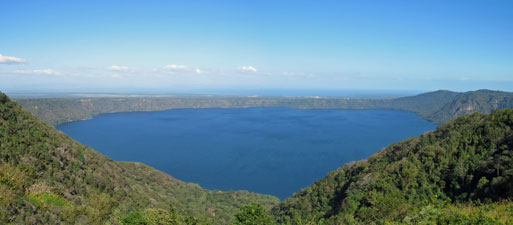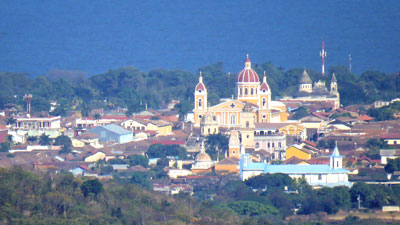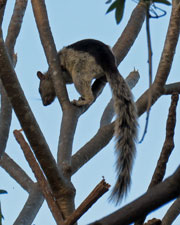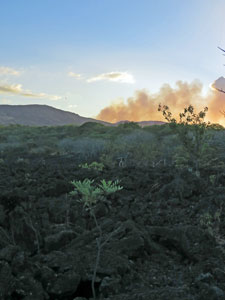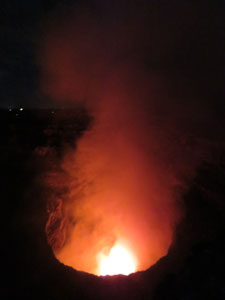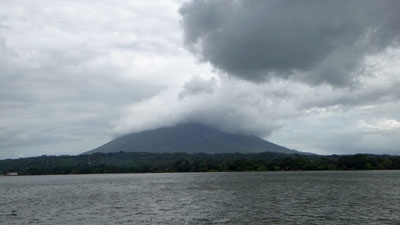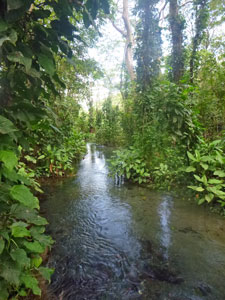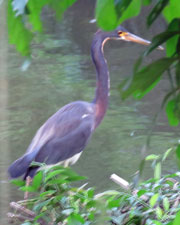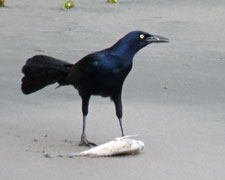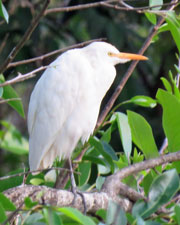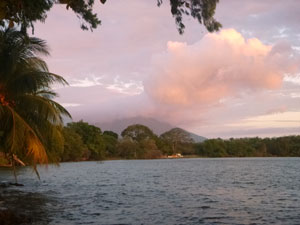| Nicaragua |
Leon |
We were up before dawn to catch the local mini-van to the port of La Union, from where we would embark for a trip across the Gulf of Fonseca to Nicaragua. The plan was to get there early and beat the crowds at the border check-point. It would have worked had there been any records of us arriving in El Salvador, but there weren't. After an hour or so, our guide Isaac managed to sort things out and we headed down to the pier to board our vessel – it was a 20 seater Salvadorean long-boat with twin outboard motors and, despite initial misgivings, was a pleasant way to make the two-hour and 52 km trip past the islands of the gulf. |
|
|
|
Soon, the black volcanic sand beaches of Nicaragua appeared – but where was the port? Well, there wasn't one. Like a bunch of illegal immigrants, the boat backed up on to the beach and we all jumped out to carry our suit cases and packs up the black sand to a waiting bus. Only the small immigration office in the middle of nowhere a few hundred metres inland gave some semblance to a border crossing. Still, we were duly stamped in and continued on our way legally to the old colonial town of Leon, our stop for the night. |
 The roofs of Leon and Volcan Casita |
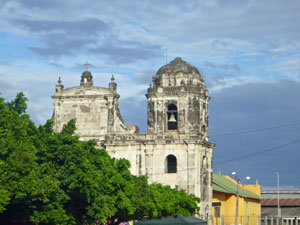 Leon's Spanish past |
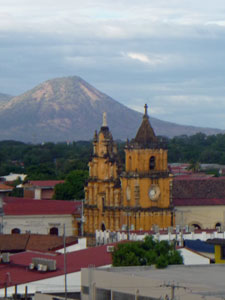 Volcan Santa Clara frames the city
|
That afternoon, Isaac took us on a short walking tour of colonial Leon, with its 18th century churches and large and ornate white-facaded cathedral. We were lucky to arrive in the Central Plaza just as a group of drum bands and dance groups paraded by to celebrate the 100th anniversary of the death of Reuben Dario, a famous Nicaraguan poet. Leon is famed for its poets. |
||
|
|
|
It is also famed for its role in the Sandinista Revolution against the Somoza dictatorship and during a morning visit to the Museo de la Revolucion, I learnt all about the history of the Sandinistas from a wizened old guerillero – fascinating, even when told in Spanish. |
||
|
Granada |
Today was farewell to one colonial city, Leon, and hello to another, Granada. Set on the shores of Lake Nicaragua, Granada is smaller, more compact and has a better tourist infrastructure. This means that streets are cleaner, buildings better restored, and there are more restaurants and shops. It also means more mariachi bands, flower and souvenir sellers and restaurants touting their goods and services. There is also a downside to any improvements. Needless to say, Granada is also a colonial town – like Leon, our hotel was built around a lovely central courtyard, the hallmark of old Spanish architecture. |
|
|
|
|
|
|
We spent a full and mixed day in Granada:- visiting the old colonial buildings and sites; exploring some of the hundreds of islets in the lake that were formed by a volcanic explosion thousands of years ago and are now home to birds, monkeys, bats and rich ex-pat Americans; and visiting pottery workshops and local markets. |
||
|
|
|
|
|
|
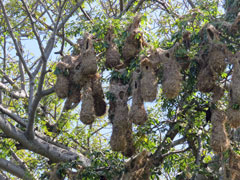 |
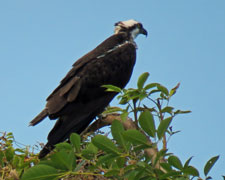 |
|
|
Best of all, as the sun descended over Nicaragua, we drove up to the top of Volcan Masaya and peered down into the throat of an active volcano to see the glowing magma and red hot gases deep within the crater.
|
|
|
|
On leaving Granada the following morning, we headed by bus to the shores of Lake Nicaragua, where we caught a fairly overloaded and top-heavy ferry across to Omotepe Island, formed from twin volcanic peaks, one active and one dormant. For the first time in two weeks we had some rain – however light. The volcanos seemed to generate their own weather patterns and remained cloud-covered while we were there – a little disappointing! |
|
|
Ometepe Island |
After some overnight rain, the following day dawned to grey skies, a warm wind and a few periods of drizzle. There would be no point trying to climb either of the cloud-covered volcanoes today, so a group of us decided to hire some bikes and explore Omotepe. Ten set out from our sea-level hotel and by the time we had finished the end of our first long climb of several kilometres across the flank of Volcan Concepcion, only four were left – a variety of knee problems and dodgy bikes had well and truly splintered the peleton. The reward for the four of us who pushed on was a long sweeping run down to the east coast of Omotepe Island, passing through small villages and banana plantations. Horses, cattle and pigs wandered along the edge of the road to give a brief glimpse of island life. |
||
 Ometepe cycle trip |
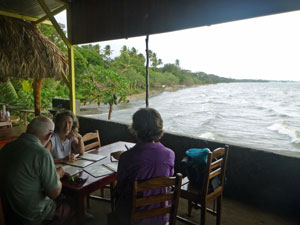 Lunch stop over the windswept lake shore |
 Cattle on the lake shore |
Reaching the lake's edge at Playa Domingo, we stopped to have a hot chocolate on the deck of a local comedor. Lake Nicaragua is big – with a small surf rolling in to the black sand beach and a watery horizon, it looked for all purposes like the sea. We then started to head back, detouring after two kilometres to stop at the Ojos del Agua, a large pool of crystal clear spring-fed fresh water. It was a great place for a swim and lunch, before the hard climb back up to the saddle on the lower slope of Volcan Concepcion. |
||
 Passing some locals on a lakeside walk |
 Swimming in Ojo de Agua |
 Ometepe chicken bus |
|
On the way down from the saddle, we stopped to do a short walk up through the thick forest on the rough basalt rock strewn soil. We had hoped to reach a viewpoint over the island, but couldn't find it. Still, it gave us a good idea of the vegetation and landforms of the volcano's slopes. Omotepe is a curious island – although formed and dominated by two big volcanos, it is very difficult to see their cones from most parts of the island, not just because they generate their own cloud caps, but because of the dense and tall vegetation that has colonised the rich volcanic soil. |
|
 Old lava flow |
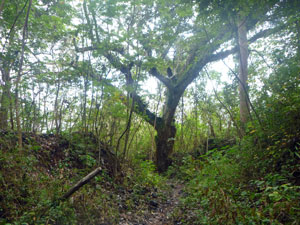 The forest of Ometepe |
|
|
|
|
|
It was good to have had a bit of hard exercise, but now all that remained was to coast down the long stretch of cobbled road to our hotel, have a well-earned shower, watch yet another glorious sunset and enjoy a glass of red wine as the fire-flies flitted about the bushes. We didn't see as much of Omotepe as we would have liked, but it was still a very pleasant time. |
|||
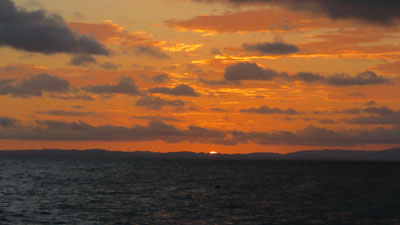 Sunset over Lake Nicaragua |
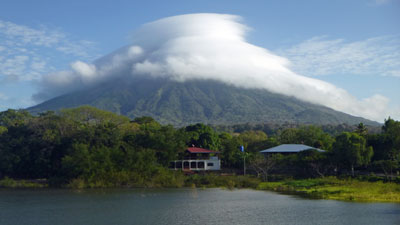 Cloud-capped Volcan Concepion on Ometepe |
|
|
|
The wind sprung up overnight and rattled the windows of our room on Omotepe. The upside was that it cleared a lot of grey cloud away – when we headed down to catch the ferry back across Lake Nicaragua to the port of Rivas, the sun was shining. However, the twin volcanos, Concepcion and Maderas, were still generating their own cloudy caps. As we waited for the ferry to leave, the sight of the white bands of cloud swirling around the cone of Concepcion before flowing gently down its far slope will remain my abiding image of Omotepe.
|
|


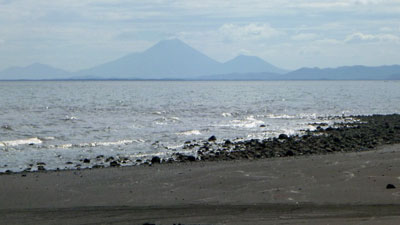

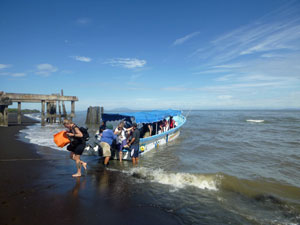








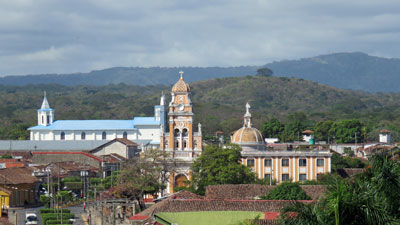
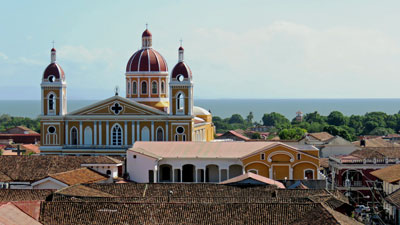
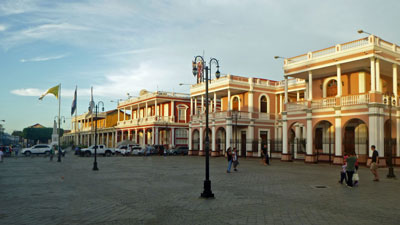



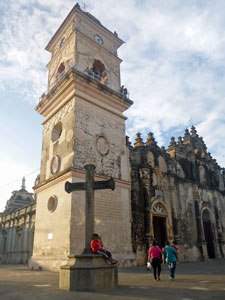
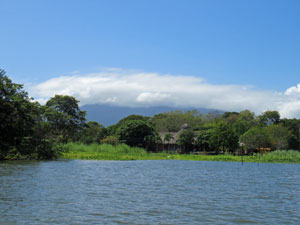
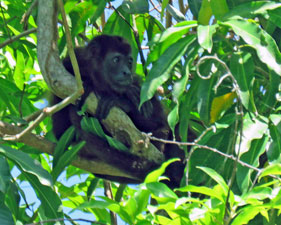
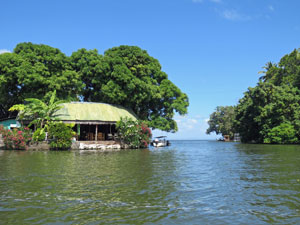
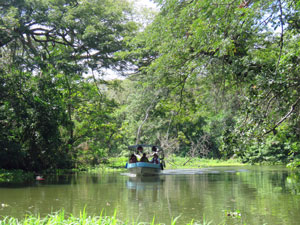

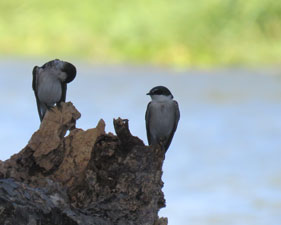
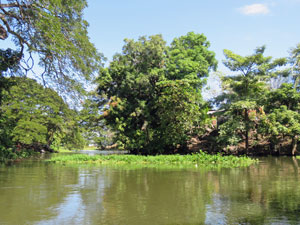
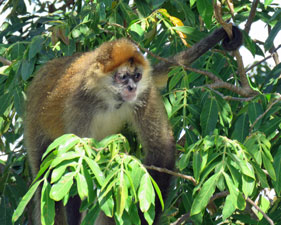
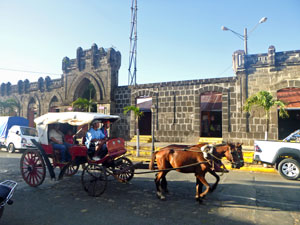 The old colonial market place of San Marcos
The old colonial market place of San Marcos